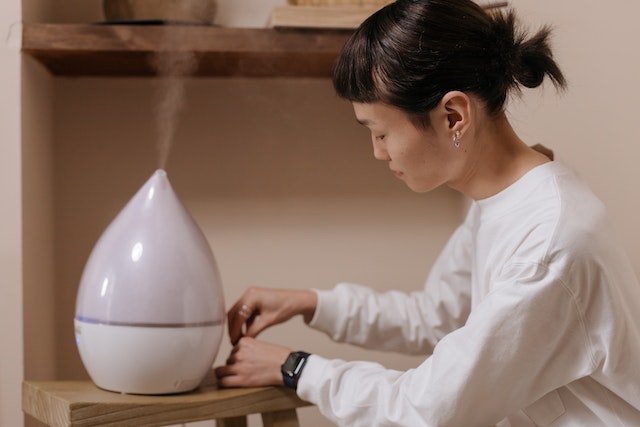Respiratory and skin allergies are common health conditions that affect a significant portion of the population worldwide. They can have a considerable impact on individuals’ quality of life and overall well-being.
According to the American College of Allergy, Asthma & Immunology (ACAAI), allergies are prevalent amongst a large portion of the population. Allergic rhinitis affects approximately 10-30% of adults and up to 40% of children. Moreover, 8% of adults and 7% of children are affected by asthma.
A skin allergy is caused when one’s immune system reacts atypical to certain substances. One of these skin allergies is atopic dermatitis (eczema), which affects around 10-20% of children and 1-3% of adults. Contact dermatitis affects around 15-20% of the population at some point in their lives.
The impact of respiratory and skin allergies extends beyond physical symptoms. Allergies can have a significant economic burden due to medical expenses, missed work or school days, and reduced productivity. Moreover, allergies can have a substantial impact on mental health, leading to increased stress, anxiety, and impaired sleep.
To address these challenges, smart technology, applications, and IoT (Internet of Things) devices can play a crucial role. By leveraging these technological advancements, individuals can monitor and manage their allergies more effectively.
Importance of good indoor air quality (IAQ)
Having good indoor air quality (IAQ) and creating an allergy-free home directly impacts our health and well-being. Poor IAQ can lead to various respiratory issues and allergies and even exacerbate conditions like asthma. By ensuring clean and allergen-free air indoors, we can breathe easier and reduce the risk of health complications. Managing allergies and asthma becomes much easier in an allergy-free home, minimizing exposure to allergens such as dust mites, pet dander, and mold spores, individuals can experience fewer symptoms and enjoy a higher quality of life. Good IAQ helps preserve the property itself. Dust and pollutants can accumulate over time, leading to damage to furniture, carpets, and other belongings. By keeping the air clean and free from harmful particles, we can protect our investments and maintain a healthier living environment.
How can smart HVAC systems contribute to allergy relief and improved indoor air quality?
“Smart heating, ventilation, and air conditioning systems can play a significant role in improving indoor air quality and reducing allergens. The Internet of Things is the brains behind a smart HVAC system. Including real-time weather data from the internet, it is a network of interconnected motion and noise detectors, thermometers, humidity sensors, location indications, and geo-fencing.
The control panel receives all of this data, which artificial intelligence (AI) and machine learning processes to make timely and precise changes to the HVAC system in response to both internal and external changes in air quality.
A smart HVAC system will provide site managers with useful information in addition to initiating automated changes to maintain adequate levels of indoor air quality. They can then use this information to make educated choices, such as whether to purchase a dehumidifier or humidifier, whether to repair or replace ‘leaky’ equipment and plants, and whether or not the current ventilation system is functioning well.
Workplace comfort can be improved with the help of a building management system (BMS) and smart HVAC. With the help of smart HVAC systems, users can adjust the temperature and humidity to meet their needs and those of the present weather and the activity they are engaged in. Additionally, the system is taught by its users, so when people add their preferences, future automated adjustments will be tailored specifically to their requirements.
Allergens like mold and fungus can be prevented with the help of an HVAC system by keeping the humidity between 30 and 50 percent. Thus, a smart HVAC system can greatly help with allergy relief and improve indoor air quality.”
Jitendra Tiwari from Civil Lead
Are there any specific HVAC maintenance tasks that should be performed regularly to minimize allergens?
“The most important HVAC maintenance task a homeowner can do to reduce allergens is to replace the furnace filter. The filter should be changed at a minimum every 90 days. Severe allergy sufferers may find it beneficial to change it monthly. Another important HVAC maintenance task is having the air ducts cleaned every 3-5 years by a National Air Duct Cleaners Association (NADCA) certified air duct cleaning company. Air duct cleaning should also be done after any construction, remodeling, or restoration that creates dust. Professional air duct cleaning greatly reduces allergens and other airborne particles. This service should not be performed by carpet cleaners or other amateurs.
Air duct sealing can also help reduce allergens by repairing leaky ducts, which allow dust and other contaminants to enter the HVAC system. Manual air duct sealing can be done by a homeowner with either HVAC metal tape or an application of water-based duct mastic. Internal air duct sealing can also be done by a certified AeroSeal installer, which will also result in energy savings.
Lastly, your furnace should be checked yearly by a licensed HVAC company to make sure it is working efficiently and safely.”
Brandon James Kirk from Planet Duct
How do air filters in HVAC systems compare to standalone air purifiers in terms of allergy relief?
Both HVAC filters and stand-alone air purifiers remove allergens from the air. However, stand-alone units provide concentrated allergen removal in a small area of your home. Conversely, HVAC filters provide whole-home filtration at a less concentrated rate—fluctuating with your filter’s MERV rating. We recommend using an internal HVAC air purifier to get the best of both worlds. Let’s take a closer look.
Stand-alone air purifiers use thick filters and UV sterilization to powerfully purify the surrounding air. However, these units only remove allergens in a single room or a small area—often with a 3 to 6-foot radius. This method works great around your desk or favorite spot to relax, but you would likely need multiple units in every room to provide allergy relief at home.
While less powerful, HVAC air filters reduce the allergens circulating through your system and across your entire home. Your central HVAC system will move millions of cubic feet of air every day—providing the greatest chance to remove and reduce indoor allergens. However, they do not provide the concentrated relief of a stand-alone unit.
At Bonney Plumbing, Electrical, Heating and Air, our recommendation for allergy relief is an in-unit air purifier, like the I-Wave or the Air Scrubber Plus. These systems give you the best of both worlds—cleansing allergens from the air like a stand-alone unit while maintaining the whole-home volume of an HVAC filter.
Michelle McCauley from Bonney
What’s your best advice for handling a dust allergy?
“Handling a dust allergy can be challenging, but with the right approach, symptoms can be managed, and exposure to allergens can easily be minimized.
- Clean regularly: Use a damp mop or cloth to clean bare floors, as dry methods can kick up dust particles. Vacuuming can help reduce dust mites, but be cautious not to overdo it, as excessive vacuuming may stir up more dust and worsen symptoms.
- Use allergen-proof bedding: Invest in allergen-blocking or dust-proof covers for pillows and mattresses. These covers create a barrier that prevents dust mites from coming into contact with you while sleeping.
- Reduce carpeting: Dust mites thrive in carpets, so consider replacing carpeted areas with tile, wood, vinyl, or linoleum flooring. These surfaces are easier to clean and don’t trap as much dust.
- Control humidity: Keep humidity levels below 50% in your home using a dehumidifier or air conditioner. Dust mites thrive in humid environments, so lowering humidity can help reduce their population.
- Use HEPA filters: Install HEPA filters with a MERV rating of 11 to 13 in heating and cooling units. These filters can trap small dust particles and allergens, improving indoor air quality. Remember to change the filters every three months.
Remember, if your symptoms are severe or not controlled by over-the-counter medications, it’s important to see a doctor. They can provide a proper diagnosis, offer personalized advice, and suggest appropriate treatment options for your dust allergy.”
Robert R. Chrzanowski, MD at AllerVie Health
How often should air filters be replaced to maintain optimal allergy relief?
“If you suffer from allergies, you aren’t alone. According to the CDC, more than 50 million Americans suffer from pollen, dust mites, mold, and animal dander each year.
“The purpose of an air filter is to trap these unwanted particles from circulating throughout your house,” according to FilterTime’s co-founder Blake Koch. “When you don’t change your filters regularly, they become dirty and clogged and can no longer protect you from these harmful allergens.”
To make sure your indoor air is clean and healthy, check your filter at least monthly and replace it as needed with a maximum of every 90 days. If you have mild allergies or pets in the home or are running your HVAC frequently, you may want to consider changing your filter sooner than the 90-day max. However, if you have severe allergies or use an air filter with a high MERV rating (like FilterTime’s MERV 13), you will need to change it monthly. The higher the MERV rating, the more efficient the filter. This also means because the filtration is higher, it becomes dirty faster and can negatively affect your HVAC system if not changed monthly.
Blake says the key to clean, healthy air in your home is changing your air filter regularly. If you have trouble remembering, he suggests trying an air filter subscription service like FilterTime. Subscribers choose their air filter type, quantity, size, and how often they want it delivered. When the filters arrive on your doorstep, you know it’s time to replace them.”
Melissa V. Saunders from FilterTime
Smart tech and allergies
Smart technology offers various innovative solutions to help individuals manage their allergies effectively. It empowers individuals to have greater control over their allergies by providing valuable information, automation, and real-time monitoring. By leveraging these smart solutions, individuals can minimize allergen exposure, track symptoms effectively, and create a more comfortable and allergy-friendly living environment.
Air Purifiers
Air purifiers help remove pollutants and allergens from the air. Essentially, they draw in air and use filters or technologies to catch particles like dust, pollen, pet dander, and mold spores. By reducing the concentration of these allergens in the indoor environment, air purifiers can help alleviate allergies.
Are there any specific features or technologies to look for in an air purifier for allergy relief?
“Studies have shown that air purifiers with HEPA filters successfully capture substantial amounts of airborne allergens, significantly improving the respiratory function of asthmatic allergy sufferers. With fewer allergens circulating in the air, people experience fewer symptoms, easier breathing, and a better night’s sleep.
Note that for a residential air purifier to be effective at getting rid of allergens in the home, it must have a CADR (clean air delivery rate) that matches the size of the room it’s in, and the HEPA filter needs to be cleaned and replaced regularly.
Regardless of how diligently you try to avoid them, a certain number of allergens will always find their way into the house. Using an air purifier to clean the air you breathe can go a long way toward alleviating those troublesome symptoms and improving your quality of life.
Purchasing an air purifier is an investment in your health. HEPA filters are very effective at trapping airborne allergens, and air purifiers with UV technology, such as those from Sanuvox, destroy mold spores, viruses, and bacteria that are also found in the air and can pose significant health risks.”
Paul Rosa from Sanuvox
What types of pollutants or particles can air purifiers effectively remove from the air?
“There are two types of substances in the air: particles and gases (chemicals).
Examples of particles are dust, pollen, mold spores, bacteria, viruses, etc.
Common gases in a home include formaldehyde from furniture or carpeting and nitrogen dioxide which is a gas from the burning of fossil fuels such as vehicle exhaust or from a gas stove.
An air purifier can remove both of these, provided it has the proper filters.
A HEPA filter is rated to remove 99.97% of airborne particles down to 0.3 microns in diameter. A true HEPA filter can remove a high percentage of particles smaller than this; however, the standard is based on the 0.3-micron size.
As a reference point, an N95 mask is rated to remove 95% of particles down to 0.3 microns in size. So, a HEPA filter provides an even higher level of filtration.
While HEPA filters are great at capturing airborne particles, they are not good at capturing gases.
Gases are complex and more difficult to capture. Activated carbon is good at capturing a wide spectrum of gases however is not very effective for certain gases, such as formaldehyde. To compensate for this, it is common for other materials to be used to fill the gaps.”
Peter Mann from Oransi
Are there any considerations for selecting air filters based on the specific allergens individuals are sensitive to?
“The CDC categorizes pollutants into three categories: Germs, Particulates, and Gases, all potential allergy triggers.
HEPA filters address all three. Because HEPA filters are combined with carbon-based materials, they stop mold spores, bacteria, viruses, pet dander, and dust and help to eliminate stubborn gasses from your home. Thus, the air that leaves this type of air purifying system is cleansed and almost totally free from contaminants.
Also effective but less costly is a MERV 11 or 13, 4” to 5” pleated filter, as they remove particulates as small as 0.3 microns (A human hair is 75 microns). Some manufacturers add carbon to pleated filters to address gases.
UV air purification is ideal for gas and germ inactivation and is often paired with a home’s filtration system for complete contaminant treatment. Humidification control is also essential, as proper humidity levels (40-60%Rh) keep pollutants in check. Outside this range, bacteria, viruses, fungi, mites, and allergy triggers increase. Comprehensively, air filters, humidity control, and UV disinfection are most effective in removing airborne allergens.
Lastly, because we travel to different rooms in our homes, whole house treatment ensures the best results (as opposed to room systems that only treat one room).”
J. Paige Freeland from General Filters
Thermostats
With the use of thermostats, people can create a comfortable and allergen-friendly environment. An optimal temperature and humidity level prevents the growth of mold and reduces dust mites. Both of which can trigger allergies.
Vacuum Cleaners
By maintaining your home clean and removing dust from floors, carpets, and upholstery, you can reduce allergens in the indoor environment. Vacuum cleaners are effective in capturing and removing dust, pollens, and other allergens.
Are there specific features to look for in vacuum cleaners or steam cleaners that make them more suitable for allergy sufferers?
“A vacuum steamer (steamer with extraction function) is better for allergy sufferers.
A steam cleaner with extraction, or steam vacuum, combines steam cleaning with the ability to extract dirt and moisture from surfaces.
Regular steam cleaners focus solely on using steam to clean surfaces and lack the extraction feature.
Specific features to look for in vacuum cleaners or steam cleaners for allergy sufferers:
- HEPA Filtration
- Sealed System
- Allergen-Blocking Bags or Canisters
- Anti-Allergen Treatments
- Steam Temperature and Pressure
- Attachments and Tools”
Lev Tretyakov from Fortador
How can robotic vacuum cleaners help alleviate allergy symptoms by reducing dust and allergens?
“Robot vacuum cleaners can be a helpful solution for individuals with allergies. They reduce dust and allergens while operating independently and can be programmed to clean while you’re away, which minimizes your exposure to airborne particles. These appliances can be effective at cleaning hard-to-reach places like under beds and sofas, where dust and allergens tend to accumulate. They use advanced sensors to navigate around furniture without bumping into it, and newer models utilize laser-based navigation systems for more comprehensive cleaning and dirt sensors that allow them to focus on heavily soiled areas.
However, robot vacuums are not suitable for cleaning multiple floors or stairs, and obstacles like cables and rugs can pose challenges, requiring occasional intervention. The noise generated by robot vacuums may be disruptive.
While they provide effective cleaning, their suction power is generally lower than traditional vacuums, necessitating more frequent cleaning cycles, especially on carpets. Additionally, their smaller receptacles require more frequent emptying, which can potentially release allergens into the air. Therefore, it is important to choose a robot vacuum model that has proven to maintain adequate suction and minimize allergen exposure during use and maintenance.
Third-party certifications are a useful way of verifying product performance. For example, the Asthma & Allergy friendly® Certification Program specifically tests for effective pet allergen and dust mite allergen removal in a test that is designed to mimic in-home use. The certification also assesses allergen exposure during receptacle emptying and the coverage of the floor by the robot vacuum’s navigation system.
Robot vacuums can be a valuable addition to your home appliance collection. However, they should not be considered a complete replacement, as they cannot clean areas such as curtains or upholstery effectively. It is important to strike a balance between the convenience of a robot vacuum and the thoroughness of manual cleaning to ensure optimal indoor air quality.”
Gráinne Cunniffe, PhD, Science Lead at Allergy Standards Ltd.
“Robotic vacuum cleaners can indeed help alleviate allergy symptoms by reducing dust and allergens. These automated cleaning devices are designed to efficiently clean floors and carpets, capturing and trapping dust mites, pet dander, pollen, and other allergens that can trigger allergic reactions.
The primary mechanism through which robotic vacuum cleaners help alleviate allergies is their powerful suction capabilities and effective filtration systems. These devices are equipped with high-efficiency filters that can capture even the smallest particles, ensuring that allergens are removed from the environment. By reducing the presence of these allergens, individuals with allergies can experience a decrease in symptoms such as sneezing, coughing, and respiratory issues.
A crucial feature to consider with robotic vacuum cleaners is their utilization of HEPA (High-Efficiency Particulate Air) filters. HEPA filters are designed to capture and trap microscopic particles, including dust mites, pollen, pet dander, and other common allergens. These filters are highly effective, capable of removing up to 99.97% of particles as small as 0.3 microns in size. By incorporating HEPA filters into their systems, robotic vacuum cleaners can significantly improve indoor air quality and reduce allergy triggers.
The HEPA filtration technology in robotic vacuum cleaners ensures that allergens are not simply stirred up during the cleaning process but are instead captured and securely retained within the filter. This prevents the allergens from being released back into the air, reducing the chances of allergic reactions occurring.
Furthermore, robotic vacuum cleaners are designed to clean thoroughly and reach areas that are often neglected, such as under furniture and in corners. This comprehensive cleaning approach ensures that allergens are not left behind, promoting a cleaner and healthier indoor environment.”
Evan Morris from Corvus Janitorial
What are the benefits of using HEPA filters in cleaning devices for allergy relief?
“HEPA filters, which stand for High-Efficiency Particulate Air filters, are widely used in cleaning devices for allergy relief due to their numerous benefits. Here are some of the key advantages of using HEPA filters:
Filtration Efficiency: HEPA filters are designed to capture particles as small as 0.3 microns with an efficiency of 99.97%. This includes common allergens such as pollen, pet dander, dust mites, mold spores, and some bacteria and viruses. By effectively trapping these particles, HEPA filters help improve indoor air quality and reduce allergy symptoms.
Allergen Reduction: HEPA filters are highly effective at reducing allergens in the air. They can remove microscopic particles that are known triggers for allergies and asthma.
Effective Air Circulation: HEPA filters can be found in a variety of devices, including air purifiers, vacuum cleaners, and HVAC systems. Incorporating these filters into such devices, they help circulate clean air throughout the space, ensuring that the air you breathe is consistently purified.
Long-lasting Performance: HEPA filters are known for their durability and long lifespan. With proper maintenance and regular cleaning or replacement per the manufacturer’s instructions, HEPA filters can provide effective filtration for an extended period, making them a cost-effective choice for allergy relief.
It’s important to note that while HEPA filters are highly efficient in capturing particulate matter, they may not address all allergens or provide relief for all types of allergies. Other factors like proper ventilation, reducing exposure to specific triggers, and maintaining overall cleanliness in the environment can also contribute to allergy relief. It’s advisable to consult with a healthcare professional for personalized advice and to address specific allergy concerns.”
Vincent from Protech Allergies
Are there any specific precautions or considerations to keep in mind when cleaning to avoid triggering allergies?
At Penn Jersey, our focus has been on cleaning buildings, staff accommodation, and student living quarters for the University of Pennsylvania since 1967. Our mission is committed to the health and safety of the population we are serving. The precautions taken when cleaning a large University are the same as those taken in your home or workplace to prevent triggering allergies.
Be sensible: Know your population and its allergy profile. Know what you are cleaning. Clean regularly.
Be compliant: Read all product labels – Use products with proven hypoallergenic characteristics.
Work smart: USE HEPA filters in vacuums, air conditioning systems, and purifiers.
Be safe: Wear appropriate gloves, eye protection, and clothing for even the simplest of tasks.
Glenn Stieffenhofer from Penn Jersey
Humidifiers
Humidifiers help to maintain optimal humidity levels in indoor environments. The ideal humidity level ranges between 30% and 40%. Humidifiers alleviate some symptoms associated with dry air that can worsen allergies. Dry air causes irritations in the nasal passages, throat, and skin.
Recommendations for humidifier use for allergy sufferers
“Winter is a season when the indoor air can become very dry and cause irritated sinus passageways and dry skin. Humidifier use in this setting can help to soothe dry and irritated sinus passages. Cool mist humidifiers can be helpful in loosening nasal secretions. We must be careful with humidifier use, though, as patients with indoor allergies, such as allergies to dust and mold, can actually see a worsening of their symptoms from humidifier use. This is because dust mites thrive when there is moisture in the air. We recommend trying to keep the humidity level in the home between 40-50%, and levels can be monitored with a hygrometer. Patients with mold allergies also need to be cautious about mold spores. The filter in the humidifier should be cleaned and changed on a regular basis to prevent mold growth on the unit, which could blow spores into the home. It’s important to clean the humidifier after each use according to the manufacturer’s instructions. We recommend choosing a quiet humidifier that can be cleaned easily, as they need to be maintained and cleaned regularly to prevent the growth of bacteria and fungi. Always talk to your doctor before using a humidifier.”
Dr. Shaan Waqar from ENT and Allergy Associates
How can humidifiers help alleviate allergy symptoms?
“Humidifiers are a highly effective solution for alleviating allergy symptoms. By elevating the humidity within a room, allergens like dust mites, pet dander, and mold spores become less prone to circulating in the air and causing irritation. Moreover, humidifiers play a significant role in reducing nasal congestion, a prevalent symptom of allergies. As moisture is added to the atmosphere, nasal passages become lubricated, facilitating easier breathing. Furthermore, humidifiers contribute to minimizing the intensity of other allergy-related symptoms, such as sneezing, coughing, and itchy eyes.
Elevated humidity levels mitigate allergy symptoms by decreasing the presence of airborne allergens and providing relief to irritated nasal passages. Moist air inhibits allergen particles from becoming easily suspended, thereby reducing inhalation risk. Additionally, increased humidity fosters a healthy mucosal lining within the respiratory system, bolstering our natural defenses against allergens. This moist environment is also conducive to soothing dry and inflamed nasal tissues, alleviating discomfort and congestion. Overall, maintaining optimal humidity levels ensures a more comfortable living space for individuals with allergies and supports the body’s ability to resist allergen-induced irritations.
Experts recommend maintaining indoor humidity levels between 40-50% for effective allergy management. This range helps minimize allergens such as dust mites, mold, and pet dander. It is crucial to avoid excessive humidity levels exceeding 60%, as this can promote mold growth and worsen allergy symptoms. On the other hand, humidity levels below 30% may lead to dryness in the nasal passages and throat, increasing irritation and discomfort. Regular monitoring of indoor humidity is essential in creating an ideal environment for allergy relief.”
Allergen Monitors
Allergen monitors are designed to detect and measure the presence of allergens. It helps to provide real-time information about allergen levels. By detecting specific allergens, such as pollen, allergen monitors help people to take appropriate measures and reduce their exposure to allergens.
How can an allergy symptom tracker help identify triggers and patterns related to allergy symptoms?
“An allergy symptom tracker can help identify triggers and patterns related to allergy symptoms when used regularly and when the symptom tracker includes additional data, like environmental and nutrition information. Allergy symptoms will fluctuate depending on your environment if they are environmental allergies and consumption of food if they are food sensitivities. Tracking your symptoms allows you to draw unbiased conclusions from your data. For example, tracking the prevalence of sneezing or runny nose symptoms regularly will allow you to compare it to environmental variables like pollen or air particulate matter. Perhaps your allergy symptoms are more active during times of increased levels of ragweed pollen but not during times of increased tree pollen. Similarly, you can learn if you are developing a food allergy or sensitivity by tracking digestion-related symptoms or skin rashes and comparing them to your nutritional data. Identifying a gluten sensitivity or a more severe condition like Celiac is possible by properly tracking allergy symptoms and nutritional data.”
RiAnn Bradshaw from Live Learn Innovate Foundation
Ensure a good user experience
To ensure a good user experience with smart gadgets for allergy management, it is important to conduct research before purchasing, considering the installation process, compatibility, and user-friendly apps. Selecting gadgets that fit one’s budget and needs is crucial. Additionally, a stable internet connection is essential for seamless communication between devices, quick response times, and uninterrupted access to features. Regular software updates should be prioritized to improve performance and security to maximize the effectiveness of smart gadgets in allergy management.

Leveraging smart technology and IoT devices for allergy management offers numerous benefits in creating an allergy-free home and maintaining good indoor air quality. By utilizing allergy tracking apps, air quality monitoring, smart home integration, wearable sensors, and allergen detection, individuals can better manage their allergies, reduce symptoms, and improve their overall well-being. However, it is important to conduct research, consider budget and needs, ensure a good internet connection, and regularly update software for a seamless user experience. With the right approach and utilization of smart technology, individuals can enhance their allergy management strategies and create a healthier and more comfortable living environment.




